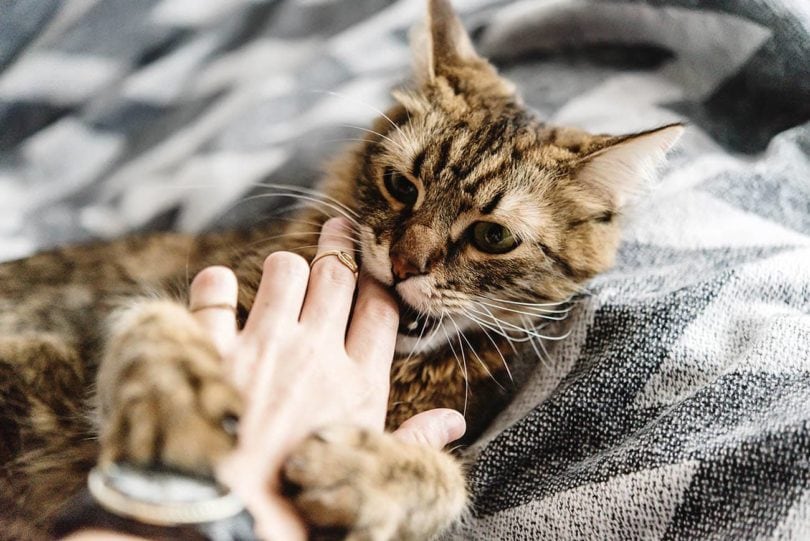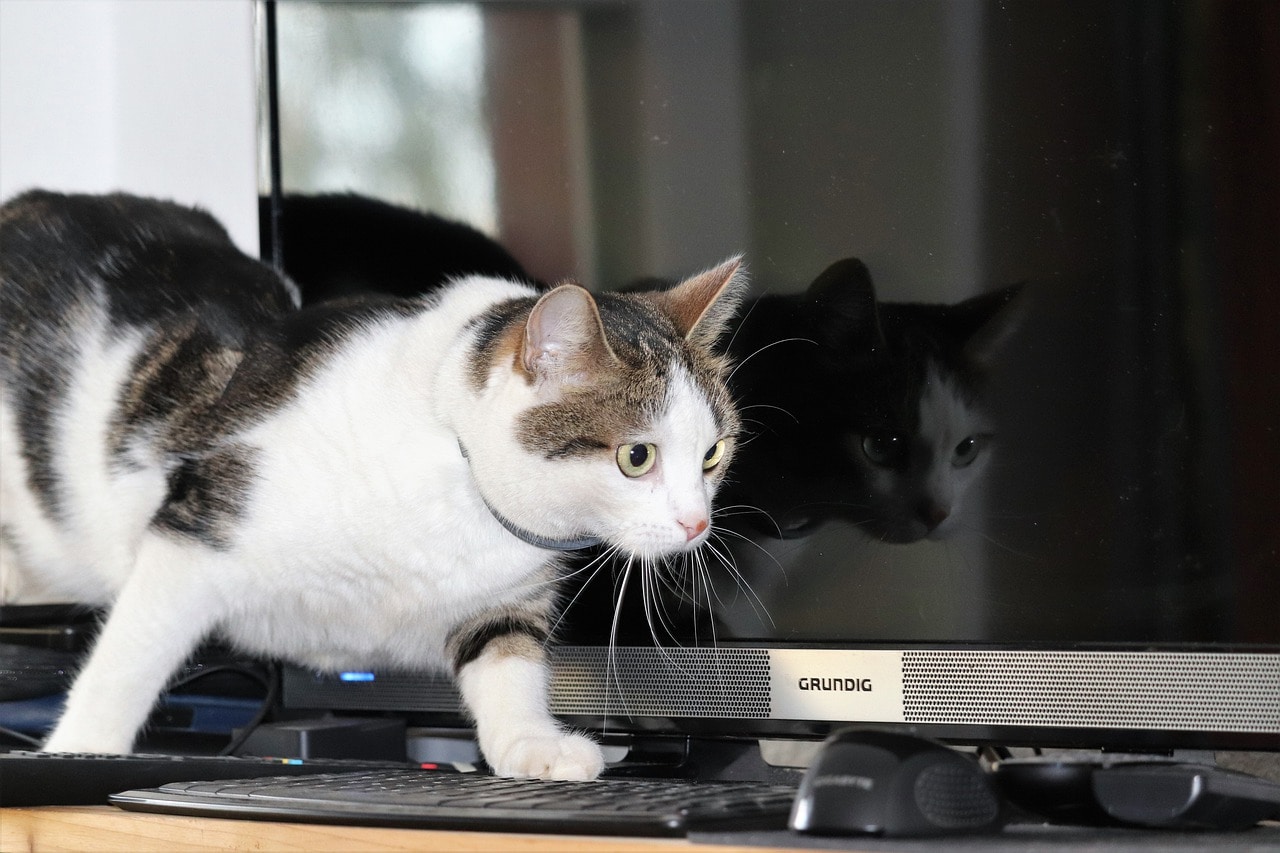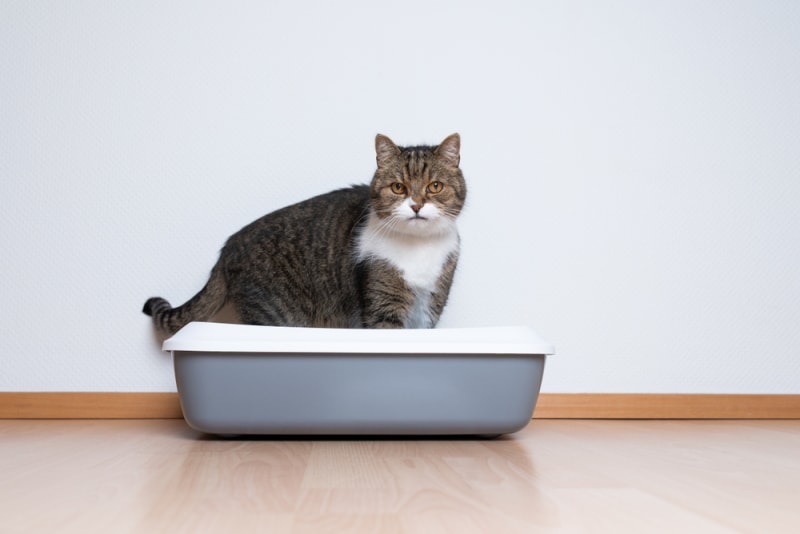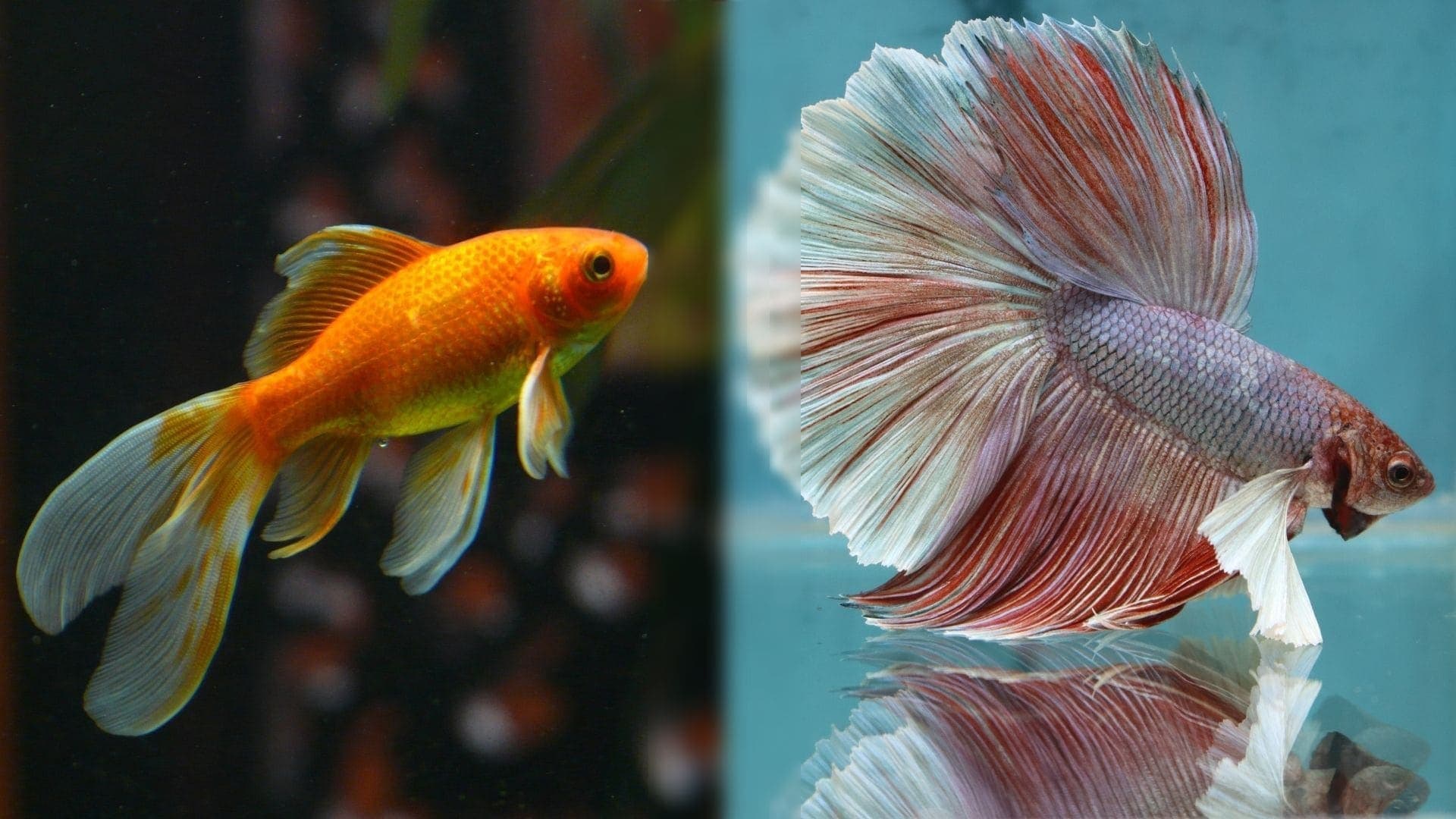Why Do Cats Bite When You Pet Them? Vet-Verified Feline Behavior

Updated on

If you spend a lot of time around cats, you’ve undoubtedly experienced “love bites,” or those gentle nips that cats give when you’re petting them or playing with them. Most of these bites don’t cause pain or cuts, but they can be sudden and unpredictable.
Biting during petting is a common behavioral problem that leaves owners confused and unsure of how to react. While experts are still not sure exactly why cats give love bites, they do have some theories and advice for how to handle it. Keep reading while we discuss each possible reason for kitty love bites.
Love Bites: Is It Aggression?
Love bites aren’t the same as aggression that comes from fear, defensiveness, or dominance. Aggression can cause pain and break the skin, while love bites are gentle and usually happen along with licking and grooming.
If your cat bites you gently and stays relaxed, that’s likely a love bite. If your cat is growling, hissing, and clawing while biting you, that’s aggressive biting that’s a response to fear or other negative emotions.
Why Does My Cat Give Me Love Bites?
Though commonly referred to as “love bites,” the name isn’t entirely accurate. When cats give you love bites, it’s a signal that they may not want to continue being petted or played with. If you continue to pet your cat, the biting may become harder or more frequent, or your cat may leave the situation entirely.
A cat’s instincts might kick in to prevent them from getting too relaxed and becoming vulnerable, which is also known as the petting and biting threshold. It is a conflict of interest between the cat enjoying the pleasures of petting and their wild survival instincts preventing them from getting into a potentially dangerous situation due to letting their guard down.
Finally, your cat may enjoy your attention and affection but may not want you to pet a particular area. Many cats don’t like being pet on their bellies or near their tails, which are habitual petting spots for dog owners. In addition, your cat may just want to relax on your lap and enjoy your company without being touched.

How to Respond to Love Bites
Cat body language can be challenging for cat owners, but paying attention can give you a lot of insight into your cat’s feelings and moods. If you notice your cat is showing signs of discomfort or annoyance when you pet them, such as their ears moving back, pupils dilating, hair puffing or standing, or twitching their tail, immediately end your petting session.
Over time, you may notice that your cat stops biting as often. You can also learn what your cat’s limits are by testing a bit. Keep your petting brief and take breaks so you can get a better read of your cat’s body language. Let your cat seek you out for attention rather than disturbing them when they’re sleeping or relaxing. Also, focus your petting on areas that most cats enjoy, such as the chin and near the ears.
Most importantly, never reprimand your cat for love bites. Your cat may be trying to communicate that they don’t like something and want it to stop. If you respond by yelling, hitting, slapping, or pushing your cat, subtle love bites can turn into more serious aggression and defensiveness.
- You may also want to read: Cat Bite Infections: 13 Critical Vet-Approved Signs to Watch For
Final Thoughts
Love bites are common behavior in cats, but they may not be the token of affection we like to believe. If you want to develop a better connection with your cat and respect their boundaries, pay attention to their body language to learn how to make petting sessions enjoyable for both of you.
Featured Image Credit: Bogdan Sonjachnyj, Shutterstock












